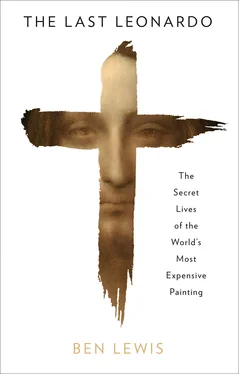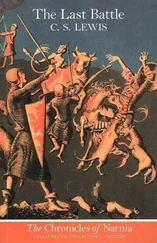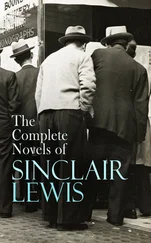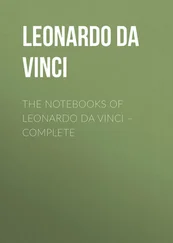Parts of the Cook Salvator looked different from the painting Simon had bought. In the Cook photo, Christ had a moustache and facial hair that made him resemble a Mexican bandit in a 1950s B-movie. That indicated that Simon’s Salvator had been restored or repainted in some way since the date of the photo. However the blessing hand, embroidery, orb and other features of the Cook were identical with Simon’s painting. Now he could narrow down his search. Before this discovery the painting could have come from any European country, but Simon now had a focus: Britain.
The second clue led back to Britain as well. Everyone in the Old Masters business knows of an etching made by the seventeenth-century print-maker Wenceslaus Hollar which bears an inscription by the artist, ‘ Leonardus da Vinci pinxit ’, the word ‘ pinxit ’ testifying that the print was a copy of a painting by Leonardo. It is an image of Christ as saviour of the world, orb in one hand, the other raised in blessing, with flowing curly hair remarkably similar to that in the Simon and Cook painting. The original Leonardo had long been presumed lost. Simon compared his painting to this print. It looked so similar in significant clues – its drapery and its blessing hand, even if – a significant clue in the contrary direction – Hollar’s Christ had a curly beard with a central parting, and his didn’t.
Simon knew where to go next. There was a particular volume on his shelf which many dealers have, and which is often a first port of call for researching the history of potentially important unknown paintings. One day in 2006 or 2007 – he can’t remember which year exactly – Simon pulled out his copy of the Walpole Society Journal , 1972. In it, the keeper of the British royal collection, Oliver Millar, had published an inventory of King Charles I’s art collection, meticulously turning a few slightly differing seventeenth-century handwritten manuscripts into a hundred-odd pages of neat type. Simon soon came across a description of a work that might match his painting: page 63, item number 49, a ‘Peece [sic] of Christ done by Leonard’. Now he had found a record that Charles I had owned a painting of Christ most likely by Leonardo, and that painting was, in all probability, the one he had bought a 50 per cent stake in for the decidedly unprincely sum of $587.50.
At the recommendation of Martin Kemp, Simon contacted a young art history graduate, Margaret Dalivalle. She had been a student of Kemp’s at Oxford and was writing a PhD about notions of the copy and the original in seventeenth-century painting. Simon asked whether she could, as she recalls it, ‘contribute to the research into the provenance history of a newly discovered painting’.
Dalivalle was born in Ayrshire in Scotland, and showed an artistic bent from an early age, encouraged by her godmother, who worked in a gallery. She studied fine art at Glasgow School of Art, then ran her own business as an exhibition designer. After a few years she returned to study, doing a Master’s degree followed by a PhD at Oxford. She now teaches at a number of Oxford colleges as a non-tenured tutor in Renaissance and early modern art history and the history of ideas.
Searching for the Salvator in British archives, Dalivalle thumbed through reams of rarely-consulted documents on thin, yellowed paper, written in faded brownish ink. Under the vaulted sixteenth-century timber ceiling of the Duke Humfrey reading room in the Bodleian Library in Oxford, where each panel is painted with an image of an open book, she pored through manuscripts. She ordered obscure volumes in the Rare Books department of the British Library, the quietest reading room of them all. She went to the archives of the Houses of Parliament, placing old bound volumes of their proceedings and reports between triangular wedges of grey foam so the books could not open flat, to protect their thick spines from damage. She examined bundles of documents in the archives of the royal family.
She hunted through inventories in which Leonardo da Vinci could be written as ‘Leonard’, ‘Leonardus’ or ‘Lionard’, and Vinci as ‘Vince’, ‘Vincia’ or ‘Vinsett’, and in which there was always the risk that his authorship had been mistaken for that of another Italian Renaissance artist like Raphael, Correggio or Zambelin – a strange spelling for Giovanni Bellini. She worked on these complex materials over several years to assemble the illustrious provenance for the Salvator Mundi , which would lead to the auctioneer at Christie’s confidently beginning his sale: ‘Lot 9b. Leonardo da Vinci. Salvator Mundi, Saviour of the World. The property of three English Kings, Charles I, Charles II and James II.’
Margaret Dalivalle declined a face-to-face meeting, but we exchanged many emails. She wore her learning a little heavily, to coin a phrase, and was defensive about what she had discovered, which, she said, would be published for the first time in a forthcoming, long-delayed peer-reviewed book. The fact is, a colleague of hers explained to me, her hopes for a permanent university post are dependent on this research, to which she has devoted the last eight years, entirely self-funded.
I learned from Dalivalle how much pride she took in the skills required for her research, and how wary she was of the layman’s ability to understand the intricacy of her subject. Individual facts, she advised me, did not matter much on their own in provenance research; one had to consider the whole construction. That was good advice, which could be applied, in ways Dalivalle did not intend, to the broader framework of the Salvator Mundi project. Dalivalle’s work on the Salvator cannot escape the over-arching context of its origin, which was one of commercial interest in a certain outcome. She was given her task over a decade ago by a dealer who wished to sell his painting as a Leonardo, and had been recommended by a professor of art history who had nailed his colours to this cause.
Since its beginning, the art market has always monetised scholarship. It is the scholars who appraise a work of art, and it is customary – quite rightly so – to pay them for their opinions. Museum boards have always been stuffed with wealthy patrons who privately collect works by the same artists that the museum supports. Dealers have always hobnobbed with curators of public collections – the former relish the prestige of selling to a public institution, the latter revel in the excitement of a new discovery. The danger that scholarship can be compromised by showmanship and salesmanship has always been clear and present in the arena of art history. In the case of the Salvator Mundi , such familiar interrelationships were built into the project in a particularly intimate and perilous manner.
PART II
Конец ознакомительного фрагмента.
Текст предоставлен ООО «ЛитРес».
Прочитайте эту книгу целиком, купив полную легальную версию на ЛитРес.
Безопасно оплатить книгу можно банковской картой Visa, MasterCard, Maestro, со счета мобильного телефона, с платежного терминала, в салоне МТС или Связной, через PayPal, WebMoney, Яндекс.Деньги, QIWI Кошелек, бонусными картами или другим удобным Вам способом.












